
![]() Epilogue
Epilogue
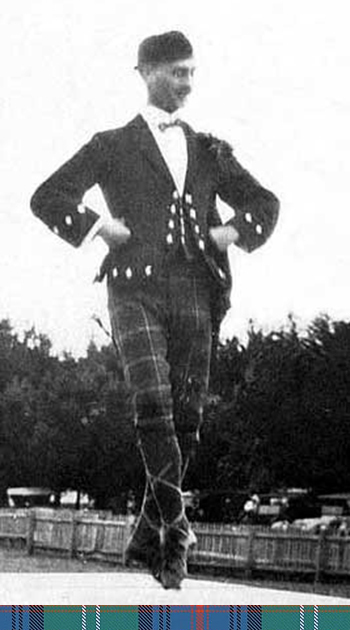
![]() Aftermath of Website
Aftermath of Website
The version that you are reading is an expansion of the first edition of this memoir that was published in book form. The book was widely distributed in New Zealand and internationally. It was posted to all Academy judges and teachers. No error of fact or of the analysis in it has been reported. The Academy referred to is the New Zealand Academy of Highland and National Dancing Inc.
There were, notwithstanding, three minor mistakes in a previous website version. I am grateful to Donald P Sargent, to Judy Clark and to Donna J. Ostrander, Canada, for their corrections to the website record and to Carol Dyer who furnished good stylistic advice on both editions.
The second edition, on this website, attracted just over 30,000 visits in its first year to 31 May 2007. Since then the website has averaged about 2,400 hits per month but there were 4,694 visits in August 2008. I cannot fathom the reasons for this spike in the number of hits. In August 2012 visits were still running at 2,400 monthly, a rate near 30,000 per year.
This is the fifth and further enlarged, edition of the memoir, the second suffering a hacker's attack in July 2008. People interested in the material may wish to make print copies of it in case there is another attack.
Very little reaction has come to me from Academy people though I am told that the hierarchy is discomfited by the history that the memoir offers as an alternative to their version of the past. I receive reports that Academy dancers are discouraged from asking questions about the Scottish Official Board.
Annetta Cowie, then a member of the Council of the Piping and Dancing Association and Vice President of its Otago Branch, has written in effect that I am dishonest in Scotchpotch 2005, the magazine of the Otago Branch. She has written also there that history should be used constructively. This is a misunderstanding of the purpose of historical study. Recall how the Academy has treated history in its Whig reconstruction of it. Notice the volte-face with its versions of its history and the erroneous most recent attempt at it. Nevertheless, Annetta Cowie’s characterisation that history should be used constructively is revealing. It is the view that history is to be malleable in the user’s hands. This is assuredly the case with the Academy where history is propaganda.
Opponents of the Scottish Official Board of Highland Dancing have written to me in support of the Academy. One theme that they develop is that the SOBHD is dogmatic and autocratic. If this is the case then it is like the Academy, so it is inverted reasoning to support an Academy having the characteristics that they object to.
![]() Coexistence Refuted
Coexistence Refuted
Another theme among some correspondents is that one style of dancing is as legitimate as any other so that the styles of the SOBHD and the Academy are equally worthy. The Academy, they propose, should be allowed to co-exist with the Board on an equal footing.
The argument for coexistence is from a period of time which recognizes fewer standards than previously in cultural activities generally. The coexistence viewpoint applies a diminished set of artistic standards in the comparison of styles to arrive at its conclusion.
Observing art is itself a creative act on the part of the observer. The deeper is the background of the observer in an art the greater is the level of aesthetic appreciation. One accepts the democratic notion that every person may advance an opinion. All the same, some opinions are better based than others, particularly where aesthetics are involved, in this case a comparison of styles. This has been a part of the problem with the Piping and Dancing Association and the Academy, neither of which understands that there is a hierarchy in dancing aesthetics.
An opinion that is to be valued does not emerge from a void and we have shown that the Academy has always lacked dancing substance. From this position, the opinion that the Academy and the SOBHD are of equal merit rests upon the application of a shallow and shrunken set of standards of comparison.
It has been claimed in correspondence by the SOBHD's opponents that Highland dancing is different in Scotland today from the way that Mr Sutherland danced. There is truth to this claim as a reading of the Chapter " Teaching and Technique" will confirm. One response would be to retrieve and preserve those techniques but how many know them to teach them?
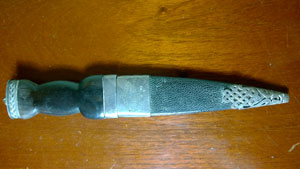
The Wallace Skean Dubh Strathpeffer ex-service champion dancer 1921 Won by W. Sutherland
Today's good dancers could experiment with written versions of Mr Sutherland's technique and extend the modern repertoire. To do so, they will first have to confront the timing of the dances as we have set them out. That will alter the way that they dance other movements. Much more could be written of his technique.
For some years after the print edition of the memoir I was a member of Scotdance NZ, the New Zealand branch of the Scottish Official Board of Highland Dancing. I still receive notices of an administrative nature from Scotdance. I have allowed my subscription to lapse because I have had no dancing contact with Scotdance or with the SOBHD which was sent a copy of the print edition of the memoir but which was not acknowledged. One inference is that these bodies have no interest in the Sutherland technique or method of dance.
It is time for dancers in all countries to reflect on the competition system which is so central to Highland dancing, Competitions result in the convergence of the way that the dances are performed. An appeal to authority is required by judges which cements the influence the various controlling bodies in the different countries. This induces a uniformity of performance which is not the purpose of the art. The cost is that dancers lose their individuality of expression. Ultimately, all bodies that regulate an art become stultifying, none more so than the New Zealand Academy of Highland and National Dancing.
Many former Highland dancers have responded to the Memoir by telling me their dancing stories. Generally the stories have been tales of Academy intolerance, of persecution and of personal disappointment in stopping dancing rather than accepting Academy control. Some of these people are old now. Some of them before their disaffection were members of the Technical Committee of the Academy. These people tried to align the Academy with the Scottish Official Board of Highland Dancing, following in a way the path of Hilary Glasgow and Neil MacPhee from so long ago and with a like lack of success.
A smaller group of correspondents tell of their epiphany in watching Highland dancing in Scotland. This was their road to Damascus in realizing the shortcomings of Academy dancing. Sometimes for the sake of grandchildren they have joined Scotdance New Zealand, the New Zealand branch of the Scottish Official Board of Highland Dancing.
![]() Scotdance NZ
Scotdance NZ
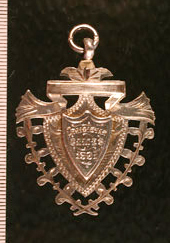
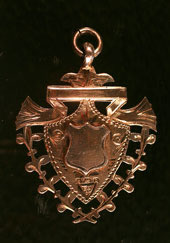
Cragievar Games
The Scotdance NZ group has foresworn competing in the New Zealand Academy competitions, that they are excluded from anyway, and they are establishing their own dancing competitions here. One of Scotdance's objectives is for its New Zealand adherents to compete overseas, particulary in Scotland.
Some Scotdance New Zealand dancers are finally following their pipers to Scotland where they are free to compete. Dancers' failure to do so was the starting point of this memoir. Some Scotdancers compete regularly in Australia. There have been other Scotdance New Zealand dancers competing in Scotland and elswhere.
Scotdance New Zealand is a small, outward looking organisation having close relationships with similar organisations in Canada, Scotland and the USA. It is administered by Judy Clarke, teacher of Morgan Bamfield. Members of Scotdance New Zealand are international adjudicators and examiners.
Founded just in 1999 Scotdance has regularly sent its dancers to compete at the world championships at Cowal, Scotland. Several of its dancers have succeeded there. Most notably Morgan Bamford, taught by Judy Clark (a former Academy acolyte who had an epiphany) is the only dancer to have won every age group at Cowal, culminating in her World Championship for all comers in 2014. Now that is peer recognition.
![]() Academy Diplomacy
Academy Diplomacy
Contrast this with the Academy dancers who keenly feel their isolation. They feel the international discrimination and are outraged by it. This feeling perfectly suits the Academy as it draws those closer together whom it has duped by its false and multiple histories.
The Academy itself has become somewhat desperate about its international exclusion and has attempted to circumvent its isolation in three ways. The first is by its international publicity and the second is by associating itself with smaller splinter groups abroad. One Academy response to the international embargo against New Zealand dancers is to set up a Highland dancing troupe that troops off to perform overseas at tattoos and the like.
The troupe has performed in New Zealand at Rugby and Cricket World Cups, in China and the in US. The dancers enjoy appreciative audiences which are remarkable for their lack of dancing discernment. It is the lure of a trip for girls in their middle or later teens and for parents who want them embedded in a structure.
This is a pale imitation of acceptance for if there is one thing that artists want it is the approbation of their peers. The troupe performs, not before its peers but before mass audiences which can hardly be described as knowledgeable. One presumes that the publicity line is that a long lost form of Highland dancing, surviving in just in the antipodes, is being demonstrated abroad.
This is not to demean the girls themselves, they dance in good faith, but to point out how they have been misled by an Academy that is responsible for the international repression of their talent. One may be good in a small country but such an artist needs to know how good against international competition.
This attempt by the Academy to garner acceptance by the hoi poloi abroad is in contrast with Scotdance New Zealand which performs before its international peers and has won a world championship.
![]() Inroads and Redress
Inroads and Redress
The two leading sports meetings in New Zealand, Turakina and Waipu, now conduct competitions for Scottish Offical Board dancers alongside but seperate from Academy competitions. There was a struggle to bring this about. The Turakina people were subjected to personal abuse while putting their case in a series of meetings with the Piping and Dancing Association. (I have been told that the atmosphere at regional meetings of the Academy can be vitriolic and unpleasant, a culture long ago laid down by Ian Cameron). In 2008 there were a few more Scotdance New Zealand competitors than there were Academy dancers at Turakina.

Winner of the Bower's Cup Championship
Turakina wanted to run Scottish Official Board competitions because there is a strong group of Scotdance dancers in nearby Marton. This group is taught by Heather Calkin, daughter of Ruth Macdowall who learned from Mr Sutherland with me in the Taranaki and Wellington Central Police Stations.
In contrast to the international orientation of Scotdance NZ, the access of Academy dancers to international competition is severely restricted. At root this is because they and their organisation believe as true the multiple apocryphal stories of New Zealand Highland dancing that the Academy continues to create. The falsehoods trap them into thinking that Academy dancing has a special status.
When members are freed of this misconception the Academy will be able to adjust its position. Instead of using quasi legal tactics to argue about autonomy and preservation, it will then be able to deal effectively with the Scottish Official Board of Highland Dancing. Academy members will then join the international fraternity of Highland dancers.
![]() The Future
The Future
Piping and Dance President McKinnon’s attempt at a rapprochement between the Scottish Official Board and the Academy is the latest and the last that we are likely to see. The Academy contemptuously rebuffed his attempt, showing which is the stronger body. (See Scottish Official Board). The Board does not need the Academy because of the success of its branch here, Scotdance New Zealand. The Board will continue to ringfence Academy dancers abroad in order to strengthen its New Zealand arm, Scotdance NZ.
The Academy has elected to divert attention from its international isolation by enticing naïve young women. It does this with the fanfare of its graded performance honours and by arranging much publicised events of choreographed mass dancing overseas for is dancing company. This troupe does not dance before its international peers but before audiences of non-dancers. Dancing in a corps is not what Highland dancing is about and it distracts the appreciation of an individual’s excellence. The New Zealand dancers are deluded if they think that the audiences constitute a valid appreciation of their dancing. The dancers are kept ignorant of the falsehoods that the Academy is built upon and that it deliberately perpetuates. Unless they stray into this memoir, which they are discouraged from doing, they have little opportunity to learn otherwise. Ignorance surrounds bliss.
The Academy and the Scottish Official Board appear to have tacitly agreed to go their separate ways. Scotdance NZ will grow, though all growth plateaus. This will mean that Academy dancers will never have an adequate external standard by which to assess themselves.
![]() Personal Note
Personal Note
The advantage that I have in the construction of this material is that I was an active participant in, and close follower of, the events of the time and I knew many of the Academy players, including Ian Cameron, even dancing at the same sports meetings as some. Indeed, I had dancing lessons with two of them.
I made none of the changes to my dancing that were promulgated by the Academy, except for the start to the Reels which perforce I had to make if I was to dance them at all and which were not that serious. Competing became a game for me which I knew the rules would not allow me to win. Crowds used to converge to the boards for my performances so I may have been an interesting dancer. What happened to me?
I married Dr Valda Hilary Donald-McCann Senior Lecturer in Physics at the University of Canterbury and later Manager of the Marsden Fund, the Government's fund for pure research. Mr Sutherland attended our wedding. We did our graduate study at the University of Chicago and I taught for many years at the University of Canterbury where I was Head of Economics. I became Principal Economist of the Inland Revenue Department, a post from which I retired to play pipes poorly and to sail our keeler judiciously.
Mother checked the early drafts of this memoir for accuracy. The first draft dated 15 February 1995, contained a shameful error. A few copies of it were circulated, including copies to Grace Glasgow, Frank McKinnon, Ian McKay, Emma Brown, Tony Stevens-Graham, Peter Dyer and Terence McKelvey.
We have gone back to the Scotland of perhaps 150 years ago to John McNeill Snr. in this manuscript of my lineage. Until early 2012 I held William Sutherland of Thurso and Aberdeen's dancing shoes, the pair shown below that he is wearing or holding in the photographs. That was when I returned them to his family which is still very proud of his dancing.
The handover gave a moment of pause as my tangible link to Mr Sutherland dissolved. I have long realized the extent of the moral education that I received from him. Excellence was not an abstract concept for me even from a young age. It was a condition acquired by a deliberate process involving thought, work and quality teaching. As a young teen this notion was percolating to other aspects of my life and by my mid teens it was a guiding principle of it. The Academy never overcame this moral precept.
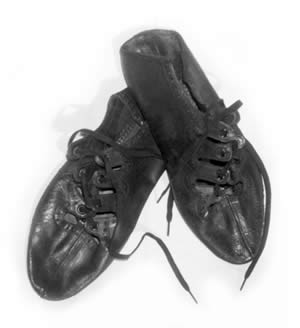
Mr Sutherland has been vindicated by the Scottish ban on New Zealand dancers, cold comfort that he was never to know. This showed the Academy system to mock Highland dancing. The Academy closed Mr Sutherland out of an art form in which he was a great performer and a marvellous teacher. It disgusted him and it persecuted him by its perversion of his art. Only the McCann, the Glasgow and Croxford families paid him homage in the isolation of his last 15 years. Mother attended his funeral service in Turakina in 1967. His ashes lie at Rose D19 in the Aramoho Cemetery.
He remains the Academy's antinomy.